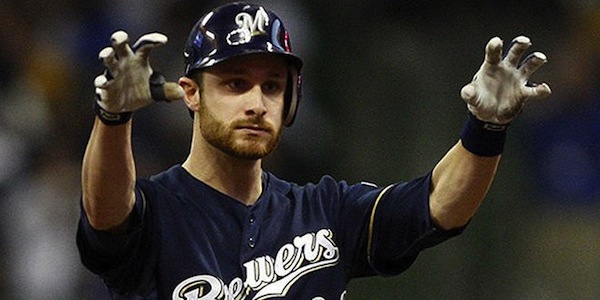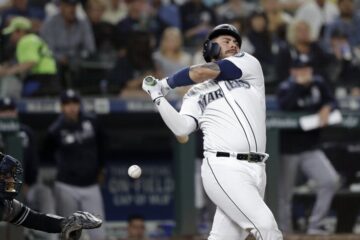2013 Fantasy Baseball, Plate Discipline: Catcher


Admittedly, plate discipline is only half of the offensive equation, but it is probably the most important half. With the advent of pitch f/x data, we have learned a whole lot more about plate discipline than we used to know. It used to be about strikeouts and walks, but those numbers are merely symptoms of the overall disease.
Teams are paying more and more attention to this information, so you should as well. We would expect to see the best players at each position on top of the list and most of the time we do, but occasionally we see some diamonds in the rough. Sometimes it is because their traditional numbers haven’t caught up to what is really going on. Sometimes it is simply because fantasy players haven’t noticed that player yet. Before we dive into the numbers, let’s roll out a glossary of terms so we are all on the same page.
Swinging Strike Percentage (SWStr)
This is precisely what it sounds like. It is the percentage of overall pitches a hitter sees that he swings and misses at. The league average is 9.2 percent, so we would expect good hitters to be under that. No single metric is perfect (which is why we are using multiple ones) but a hitter that does not swing and miss often is not as susceptible to slumps.
Strikeout to walk ratio (SO/BB)
You can see this represented one of two ways. It is either strikeout to walk (usually a number higher than one) or walks to strikeouts (usually a number less than one). Either way, the general benchmark is to have a number better than two to one for strikeouts to walks or 0.50 for walks to strikeouts.
Contact Rate (Contact%)
This is simply the percentage of times a player makes contact when he swings. Contact rates can be broken down by the percentage a player makes contact on pitches in the zone and out of the zone. We are looking at the generic rate. Usually 80 percent is close to the league average.
Swing Percentage on Balls (SWB)
This breaks down the percentage of swings occur on balls outside of the zone. There are obviously some bad ball hitters in the game, but most of the time you want to have a higher percentage of swings on balls inside the zone. The league average this category hovers around 30 percent.
|
SWSTR |
SO/BB |
SWB% |
Contact |
|
| Jonathan Lucroy |
4.5% |
1.60 |
30.6% |
89.9% |
| Kurt Suzuki |
4.6% |
1.63 |
25.9% |
87.8% |
| Victor Martinez |
4.6% |
1.66 |
27.6% |
89.2% |
| Salvador Perez |
5.3% |
5.22 |
33.0% |
88.6% |
| A.J. Ellis |
5.4% |
1.50 |
17.3% |
84.3% |
| Buster Posey |
6.0% |
1.21 |
25.9% |
85.2% |
| Chris Stewart |
6.2% |
1.88 |
22.6% |
83.7% |
| Yadier Molina |
6.6% |
1.53 |
34.2% |
87.1% |
| Carlos Santana |
6.7% |
1.35 |
24.9% |
82.0% |
| Joe Mauer |
6.9% |
1.62 |
23.4% |
81.8% |
| John Jaso |
7.6% |
1.74 |
22.1% |
79.9% |
| Russell Martin |
7.7% |
1.63 |
22.8% |
80.0% |
| Matt Wieters |
8.2% |
2.06 |
33.3% |
83.0% |
| Ryan Doumit |
8.2% |
1.99 |
28.4% |
81.0% |
| Devin Mesoraco |
8.6% |
1.86 |
31.6% |
81.3% |
This doesn’t mean Jonathan Lucroy has the best plate discipline in baseball. He has the best swinging strike rate and the best contact rate, but he swings at more balls than the league average hitter. He also doesn’t walk as much as some other hitters. Others might point to A.J. Ellis and his awesome swinging ball rate.
Out of the group, Salvador Perez sticks out like a sore thumb because of his strikeouts to walks ratio. Most players are two to one or better. He also swings at more balls than most hitters, but he seems to make contact a lot. He is okay in most leagues because his lack of walks won’t hurt you. In that case, it’s mainly batting average.
Before diving into some of the small names on the list we should point out that plate discipline doesn’t account for power. So, some of these guys are deservedly on the fringe of fantasy prominence. That being said, if you are looking for catching depth, it makes sense to start looking at the above list. On the flip side, there are some prominent names on the naughty list.
|
SWSTR |
SO/BB |
SWB |
Contact |
|
| Tyler Flowers |
16.7% |
5.02 |
36.8 |
67.3 |
| Jarrod Saltalamacchia |
16.7% |
3.70 |
31.3 |
64.0 |
| Wilin Rosario |
15.1% |
6.29 |
37.7 |
71.7 |
| J.P. Arencibia |
14.9% |
14.41 |
39.2 |
71.6 |
| John Buck |
13.7% |
4.51 |
28.8 |
72.1 |
| Nick Hundley |
13.3% |
3.19 |
36.7 |
75.2 |
| Mike Napoli |
13.1% |
6.64 |
26.3 |
68.7 |
| Jason Castro |
12.0% |
3.18 |
31.1 |
73.6 |
| Chris Iannetta |
11.8% |
1.24 |
20.6 |
71.4 |
| Alex Avila |
11.5% |
2.45 |
18.9 |
70.5 |
| Rob Brantly |
11.5% |
3.59 |
29.6 |
75.5 |
| Miguel Montero |
10.9% |
2.01 |
31.1 |
77.2 |
| Evan Gettis |
10.6% |
3.01 |
40.1 |
78.3 |
| Welington Castillo |
10.3% |
7.33 |
31.2 |
77.0 |
| A.J. Pierzynski |
9.4% |
4.47 |
46.4 |
83.2 |
I wouldn’t necessarily characterize this list as an avoid list. After all, there are some premium power bats here. It would be more like a caution list. When you have a contact rate under 70 percent as Jarrod Saltalamacchia does then you have to expect some serious production swings. Perhaps, the more important number is the swinging strike rate.
It has come back to burn guys like John Buck, Evan Gettis, and J.P. Arencibia. Gettis has certainly had his moments and could be the best position player prospect for the NL Rookie of the Year, but he is prone to prolonged slumps. We’ve already seen that happen with Buck and Arencibia. They can certainly help your team, but you have to take the good with the bad. Players in the top table will likely produce more consistently for you.



